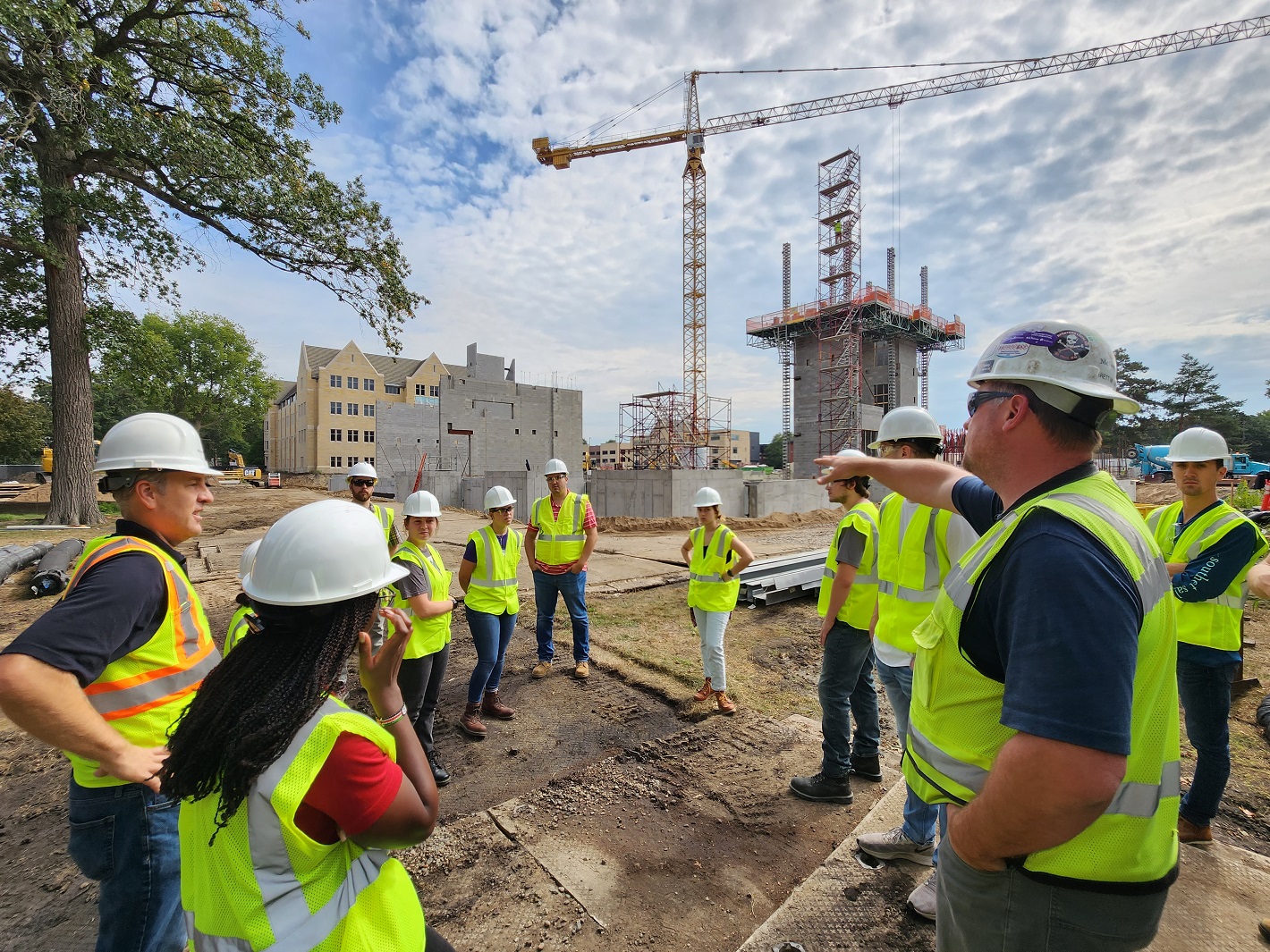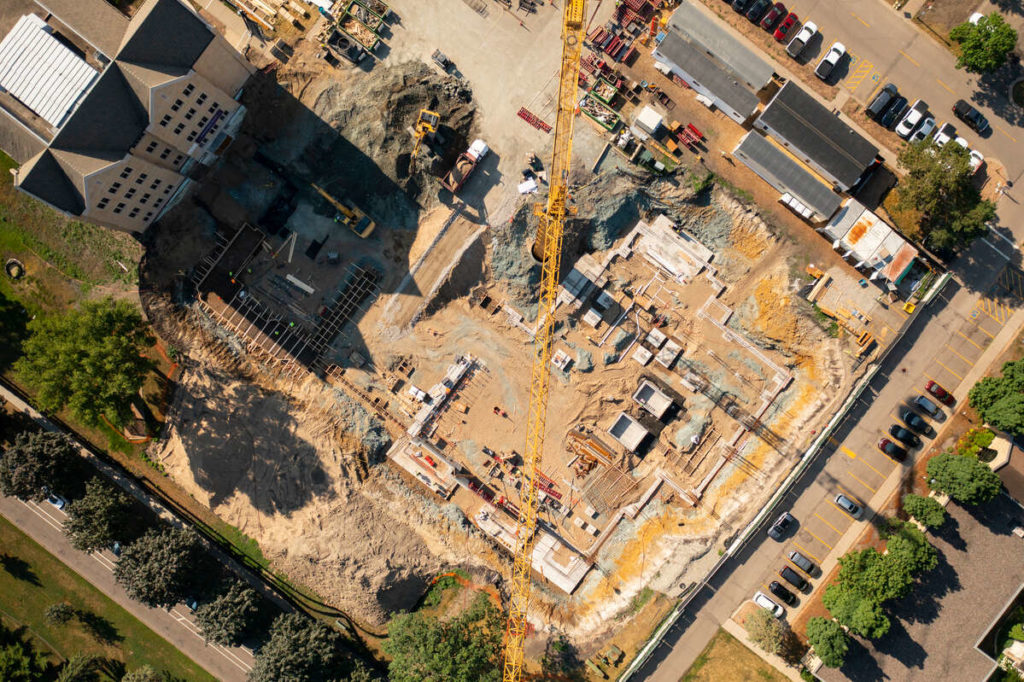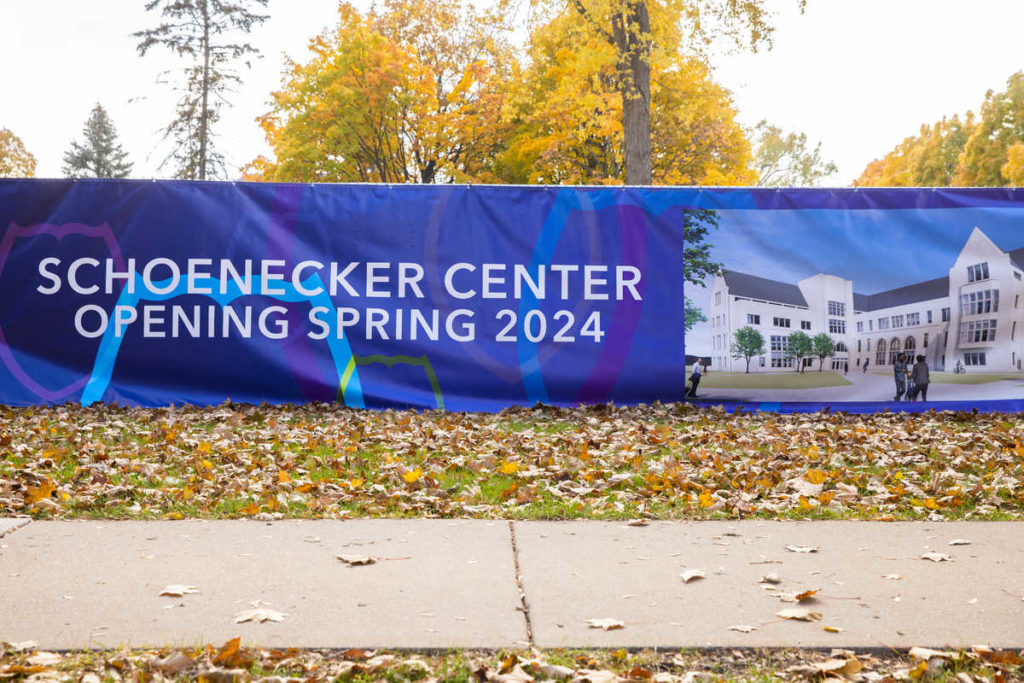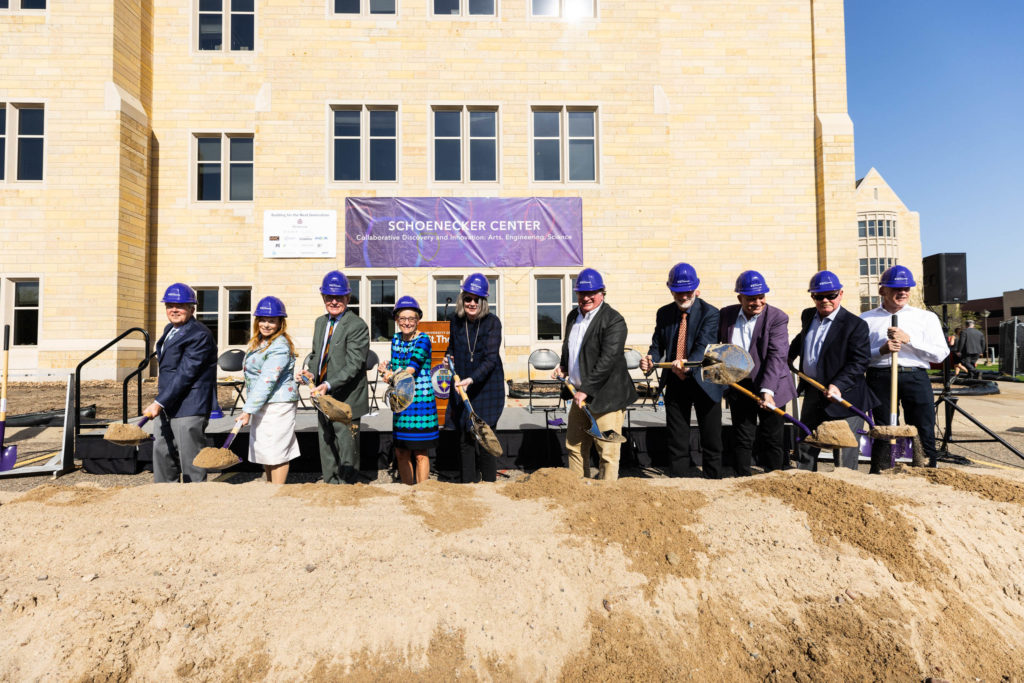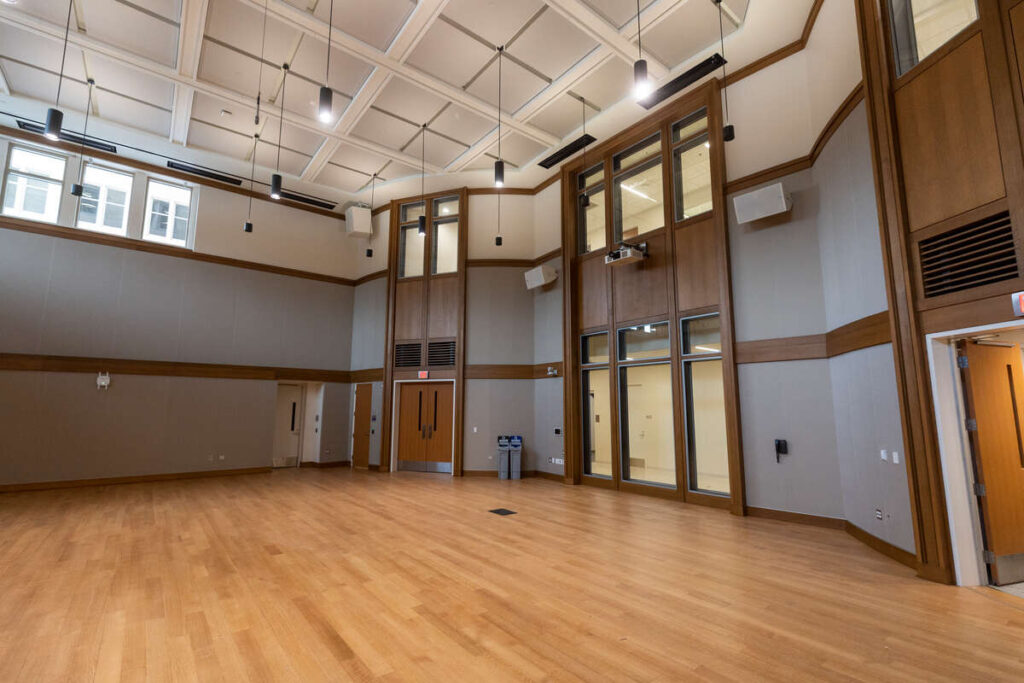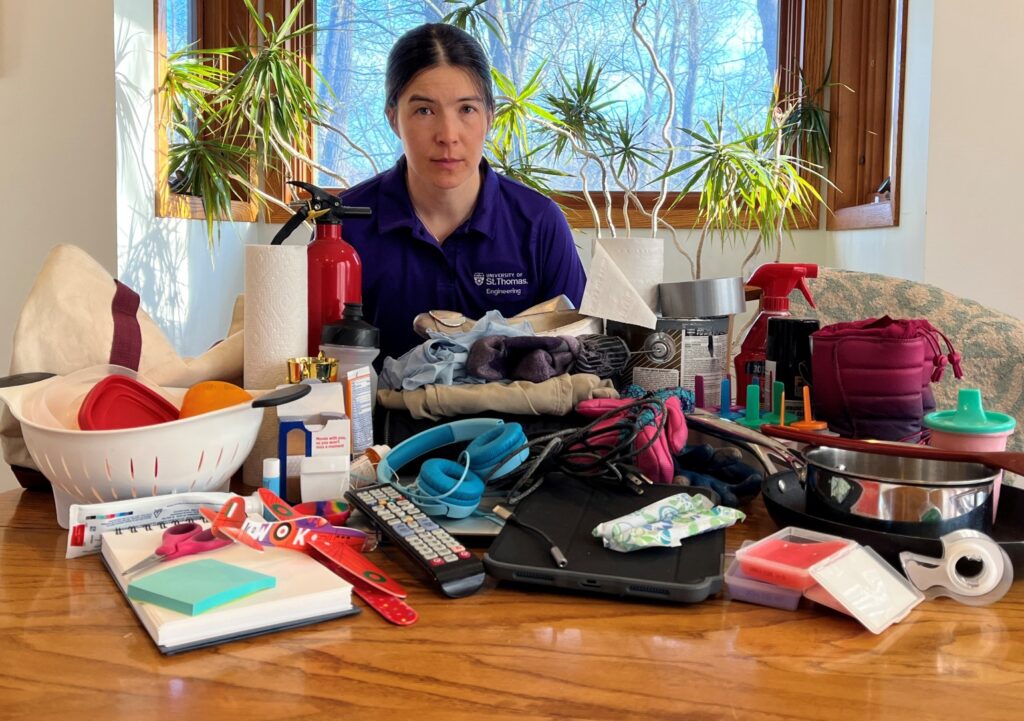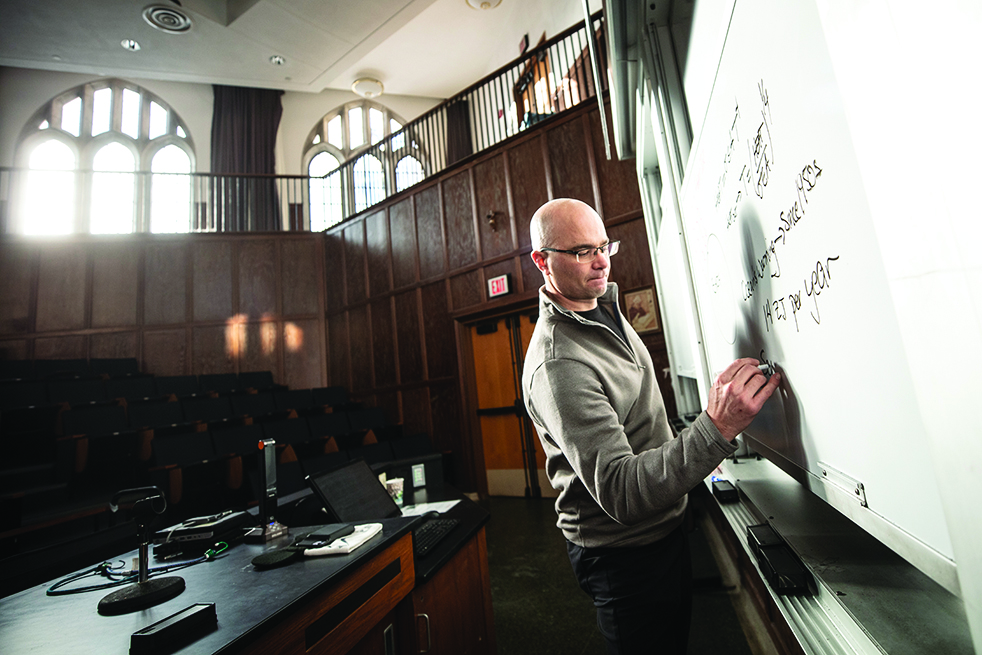University of St. Thomas engineering students are a window away from a real-life learning lab.
“Our classroom has the west-side windows … it’s like a fishbowl, they’re tying in eight feet away from you,” engineering student Genevieve Tester ’23 said about the ironworkers securing their safety harnesses before setting to work on the steel building frame.
This fall, donors to the Schoenecker Center made commitments to outfit the building with equipment for transformational experiences. Foundation 94 supported the Robotics and Automation Lab with two robotic arms. The Alfred A. Iversen Family Foundation established a high bay where students can safely test design projects against heavy pressures and forces. Additional Schoenecker Center opportunities will come to life before it opens in spring 2024 thanks to the impact of philanthropy.
St. Thomas engineering faculty are not waiting for the new building to create opportunities for their students.
The site is a “living lab right next to us,” Mohsen Tahmasebi Nasab, civil engineering assistant professor, said. McGough Construction hosted hard-hat site tours for students and provided classroom presentations. He has followed the construction closely, looking for connections to his coursework.
When Tahmasebi Nasab presented to his water resources class about underground cisterns that hold stormwater runoff, he told students, “‘If you wonder what [a cistern] is, just take a look outside!’
“We can use this to show the students [that] all the theory they’re learning is going to be useful toward a design at some point,” he said.

In one assignment, Nasab’s students calculate the rate of water runoff from a building and design a system to manage it. At the Schoenecker Center, the cistern holds water to be recycled in the university’s irrigation system.
“I had engineers who designed the stormwater system give the students a presentation [that] was pretty aligned with the coursework,” said Nasab. “[Students] had a good understanding of the theory behind it, and some of the challenges like how frozen ground is going to impact water collection – they asked really good questions.”
Said Tester, “The way that water resources are managed is more behind the scenes, but we got to see it from our classroom before it was covered up.”
Managing complicated construction projects is critical learning in a class taught by civil engineering Professor Deborah Besser, Construction and Engineering Economic Analysis. The crane at the Schoenecker Center site was a practical example. Civil engineers must ensure a crane can safely operate, considering factors like the integrity of the ground upon which the crane stands and that the crane arm has enough room to swing around the site.
“We look at project management, which civil engineers need to master,” Besser said. “It’s been great to work with [McGough superintendent] Travis [Mannum] because he uses the best practices that we talk about when it comes to construction management.”
Watching the construction workers, like the person Tester saw outside her classroom’s window, brings reality to the concepts students are learning, Besser said.
“We put on the [safety] harnesses, we felt the weight – they’re like 50 pounds – and then we see this guy shimmying out onto a steel beam,” she said. “One of the first things we talk about [in construction analysis] is, who are the participants? How do we make sure that we keep everybody safe? How do we make sure that we’re thinking about all the stakeholders? Everybody in the process needs to be considered, and when you see it day in and day out, it has a different impact.”
